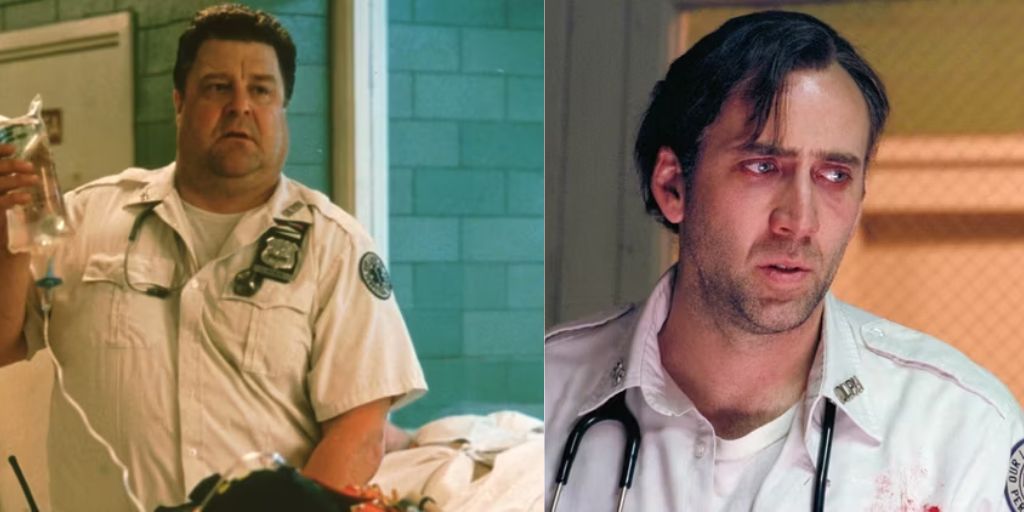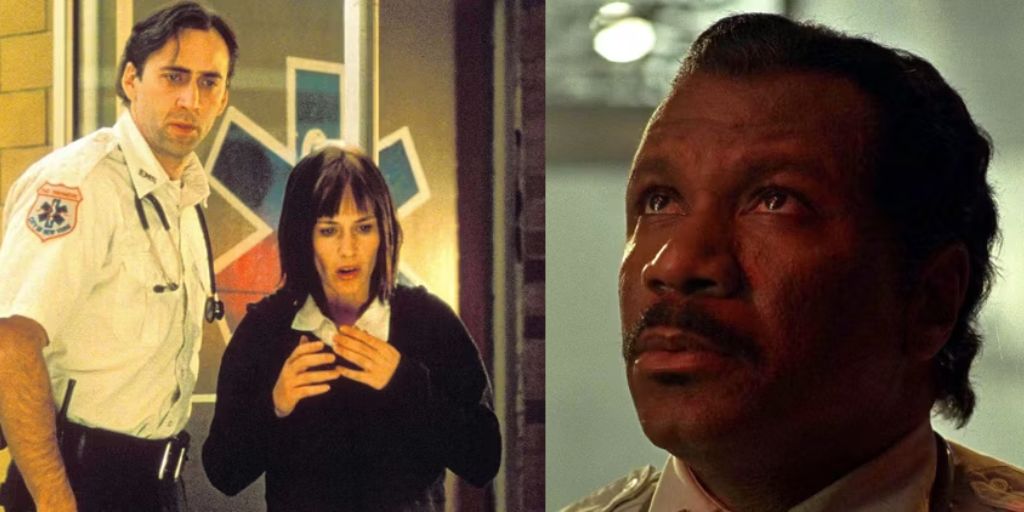It’s difficult to believe that a Martin Scorsese film could be considered “underrated” or “forgotten.” Even his films which are sometimes viewed as disappointments still spark conversations and sometimes controversy.
That’s why it’s puzzling that a film like Bringing Out the Dead, his collaboration with Nicolas Cage, seems to be largely overlooked when discussing the legacies of these two men. Released in 1999, the movie was a major commercial failure.
Critics gave it decent respect, but it quickly faded from public memory. This is unfortunate, as it is one of Scorsese’s most spiritual films, taking viewers through the dark streets of Manhattan on a journey towards enlightenment.
What Is Martin Scorsese’s ‘Bringing Out the Dead’ About?
Frank (played by Cage) is an ambulance driver who roams the night-time streets of Manhattan, driven by a deep desire to save lives. He feels compelled to be there for people in their final moments, even though he knows that most of the time, he can’t save them.
The ghosts of those he couldn’t save haunt him, yet this isn’t enough to stop him. He is addicted to the feeling of “God passing through [him] for a moment” when he does manage to save a life. It’s fitting that Frank’s job places him in a grim version of New York, where everyone seems to be under the influence of something, whether it’s drugs, food, lust, or violence.
When Frank becomes fixated on saving the life of a man who is on life support, he also becomes obsessed with the man’s daughter, Mary (played by Patricia Arquette), which leads him through a dark and challenging period.
Nicolas Cage and Martin Scorsese’s Supernatural Drama Was a Box Office Failure
Few filmmakers have portrayed the intense highs of a drug-induced state as effectively as Martin Scorsese. Perhaps this is one reason Bringing Out the Dead did so poorly at the box office. The film’s disturbing and unsettling visuals, where characters appear under harsh lighting that emphasizes every flaw, make them look like the walking dead.
Scorsese used uncomfortable camera techniques to show how Frank’s perception of time is warped in his manic state. Even the portrayal of institutions like hospitals is bleak, as they only seem capable of saving lives when someone is at the brink of death.

The film doesn’t have a clear plot; instead, it unfolds through a series of nights and nightmarish events as Frank struggles toward a spiritual reward for his suffering. Considering all this, it’s not surprising that audiences largely ignored the film, especially since it was released during a time of excitement and optimism leading up to Y2K.
But all these elements are exactly why you should watch the film now! Nicolas Cage delivers one of his intense performances, similar to his roles in Leaving Las Vegas and The Weather Man. The supporting cast, including Patricia Arquette, John Goodman, Ving Rhames, and Tom Sizemore, adds rich detail and energy to the film.
You also get more of Scorsese’s favorite band, The Rolling Stones, with songs that might be new to you. Most importantly, this film marks the last collaboration between Scorsese and writer Paul Schrader, offering another take on Schrader’s “God’s Lonely Man” theme, with the film serving as a unique ghost story version of Taxi Driver.
Give it a try, and you might find a sense of redemption by the end. This overlooked masterpiece is not just a film but an experience that challenges viewers to confront themes of life, death, and redemption.
Bringing Out the Dead offers a raw and unfiltered look at human desperation, making it a must-watch for those who appreciate cinema that goes deep into the human condition. Rediscovering this film might change how you view both Scorsese’s work and the complexities of the human spirit.




